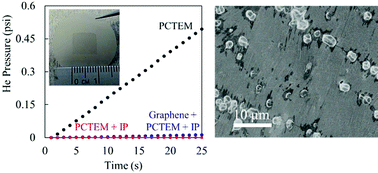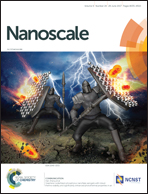Assessment and control of the impermeability of graphene for atomically thin membranes and barriers†
Abstract
Two-dimensional materials such as graphene offer fundamentally transformative opportunities in membrane separations and as impermeable barriers, but the lack of facile methods to assess and control its ‘impermeability’ critically limits progress. Here we show that a simple etch of the growth catalyst (Cu) through defects in monolayer graphene synthesized by chemical vapor deposition (CVD) can be used to effectively assess graphene quality for membrane/barrier applications. Using feedback from the method to tune synthesis, we realize graphene with nearly no nanometer-scale defects as assessed by diffusion measurements, in contrast to commercially available graphene that is largely optimized for electronic applications. Interestingly, we observe clear evidence of leakage through larger defects associated with wrinkles in graphene, which are selectively sealed to realize centimeter-scale atomically thin barriers exhibiting <2% mass transport compared to the graphene support. Our work provides a facile method to assess and control the ‘impermeability’ of graphene and shows that future work should be directed towards the control of leakage associated with wrinkles.



 Please wait while we load your content...
Please wait while we load your content...